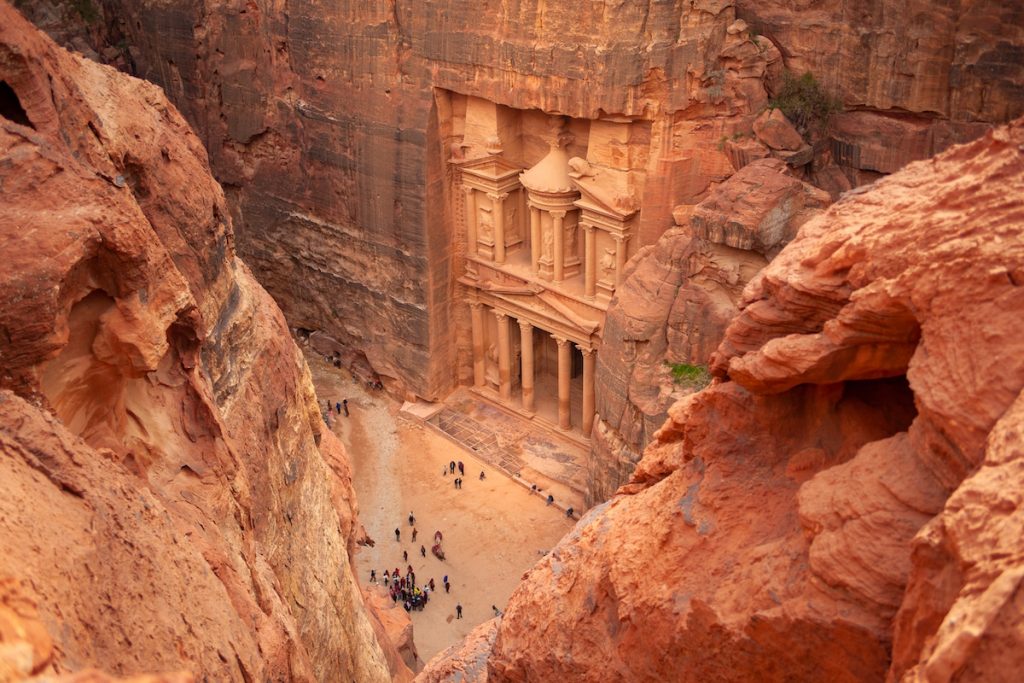
The ancient city of Petra, located in the southwestern corner of Jordan, was a hidden treasure for centuries.
Cut directly into the vibrant red, white, pink, and sandstone cliffs, it was once a bustling trading center and the capital of the Nabataean empire from 400 B.C. to A.D. 106. The city was rediscovered in the early 1800s when a European explorer disguised himself as a Bedouin and infiltrated the area.
In 1985, Petra Archaeological Park was recognized as a UNESCO World Heritage site and in 2007 it was added to the list of the new seven wonders of the world.
Fact and Fiction

The Hollywood blockbuster movie Indiana Jones and the Last Crusade was partially filmed in the historical site of Petra. The entrance to Petra, the Siq, was used to model the Canyon of the Crescent Moon in the movie. In the movie‘s climax, actors Harrison Ford and Sean Connery are seen emerging from the Siq and entering the Treasury in pursuit of the Holy Grail.
However, the archaeological fact does not match up with the movie‘s fiction; the Treasury is just a facade with a small hall used as a royal tomb. Haifa University archaeologist Ronny Reich commented that “You can‘t really say that a lot of things in the movie are accurate.” There is a giant urn carved above the entrance to the Treasury, which is pockmarked with hundreds of bullet holes.
The Bedouin tribesmen living in the area claim that local men fired at the urn in search of treasure, even though it is made of solid stone. There are dozens of tombs and other structures and sites within Petra.
History
Since at least 312 B.C., the Nabataeans have been present in Petra, Jordan, leaving behind their legacy of water capture, storage, transport, and irrigation systems.
Despite extensive archaeological excavations since 1979, no evidence has been found to date back to the fourth century B.C.
The earliest artifacts discovered are from the second and first centuries B.C. However, 85% of the city remains underground and unexplored.
In December 1993, Greek scrolls from the Byzantine period were unearthed in an excavated church near the Winged Lion Temple.
At the American Center of Oriental Research in Amman, the capital, researchers are currently studying the scrolls to gain insight into what life was like in Petra during this time. As soon as Rome took control of Petra in 106 AD, its significance in the international trading sphere began to diminish.
Earthquakes and the growth of sea trade routes further contributed to Petra‘s deterioration, and it hit its lowest point around the end of Byzantine rule in around 700 AD.
Visitors can still see the combination of Nabataean and Greco–Roman architectural designs in the tombs, although most have been plundered and their precious contents stolen. Even today, local Bedouins selling tourist memorabilia can be found near the spot where, according to Arab folklore, Moses struck a rock with his staff, causing a fountain of water to appear.
Leave a Reply